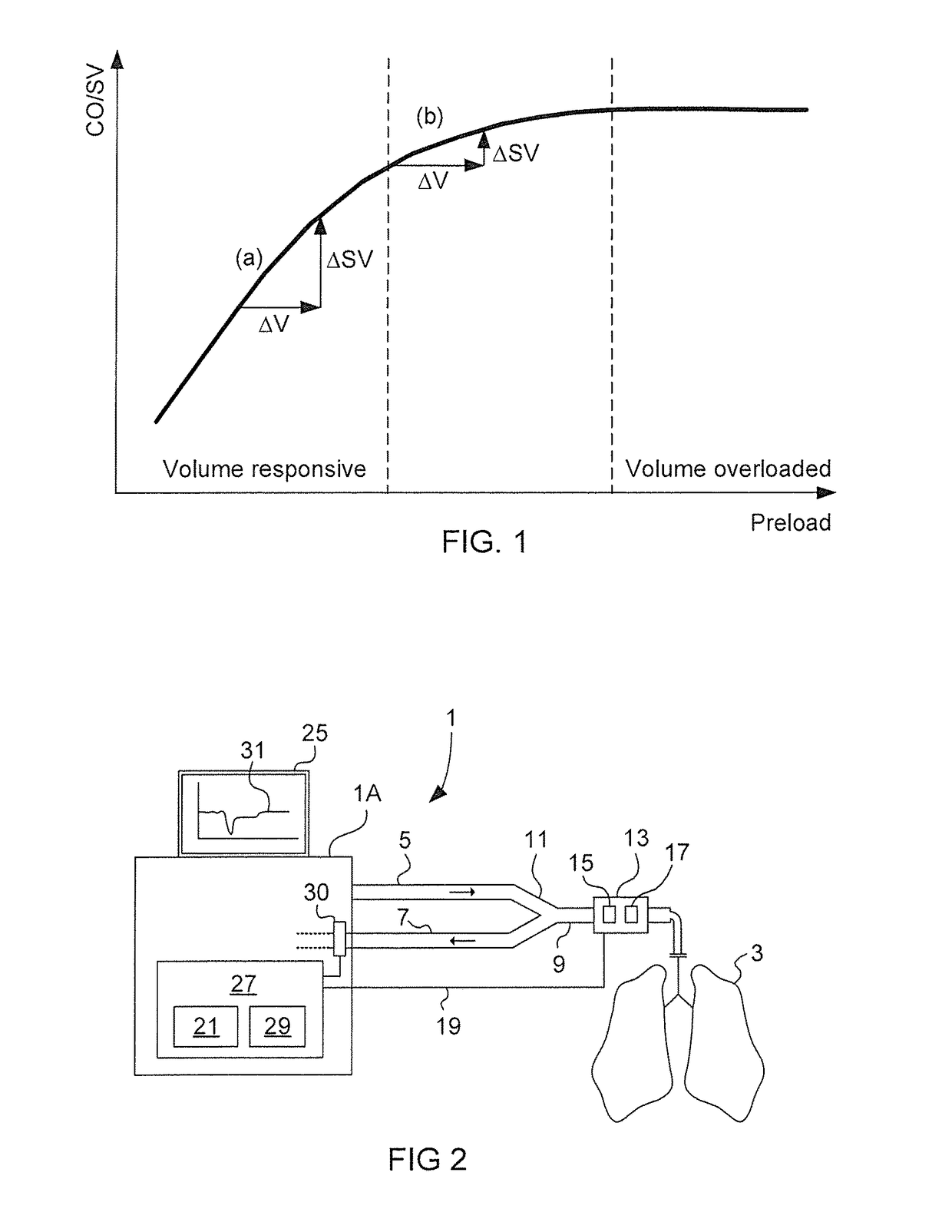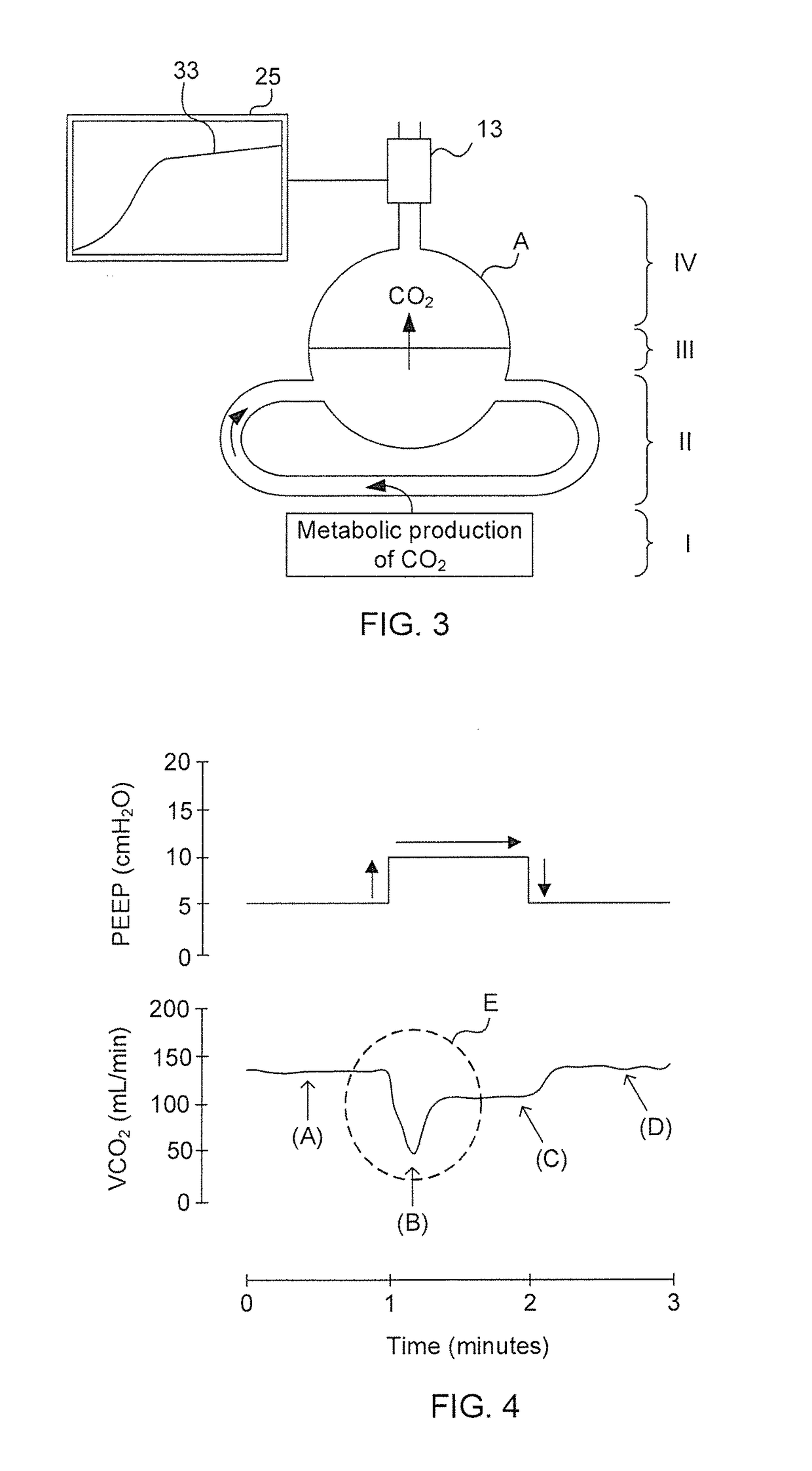In contrast, any decrease in intravascular volume or
hypovolemia due to for example bleeding,
dehydration, microcirculatory failure, third space fluid sequestration or excessive
vasodilation may cause a deficit in
oxygen delivery to tissues and if severe and / or prolonged enough may lead to organ failure.
Any decrease in cardiac preload will result in a decrease of the heart's efficiency and in systemic hypo-
perfusion of different degrees, which can frequently coexist with normal standard hemodynamic parameters such as mean arterial or
central venous pressure.
Standard hemodynamic monitoring systems can easily detect severe hypovolemic states but often fail in diagnosing moderate to mild
hypovolemia.
This is an important limitation in the monitoring of critical care patients because when such occult
hypovolemia remains for many hours it can be associated with several complications such as acute renal failure, heart
ischemia,
cerebral stroke or
wound infection among others.
In a volume overloaded state (flat portion of the Frank-Starling relationship) any given volume will not affect SV but may lead to fluid overload of lungs and body.
However, only 50% of hemodynamically unstable patients are fluid responsive and it has been clearly established that an excess of intravenous fluids (i.e. over-
resuscitation) is associated with an increased morbi-mortality as it can precipitate
lung edema, worsen cor pulmonale or induce left
heart failure, as discussed e.g. in Bellamy M C: Wet, dry or something else?
The correct assessment of the effective intravascular volemia and state of fluid responsiveness remains one of the major challenges for ICU physicians and anesthesiologists dealing with hemodynamically unstable patients.
Decisions on type, amount and timing of fluid therapy are however of great clinical relevance as both hypovolemia and hypervolemia are associated with increased morbidity and mortality.
There are however no such things as
gold standard parameters and preload remains difficult to assess at the bedside.
Static indexes can in specific contexts be related to the patient's volume status measured for example by cardiac filling pressures, but have repeatedly proven to be very poor predictors of volume responsiveness and are therefore of little use to guide fluid therapy.
However, it is currently acknowledged that their
predictive value in
ICU patients is much worse than previously thought and as low as only 2% of patients meet validity criteria to appropriately predict fluid responsiveness by means of these indexes (Mahjoub Y, Lejeune V, Muller L, Perbet S, Zieleskiewicz L, Bart F, Veber B, Paugam-Burtz C, Jaber S, Ayham A, et al.
Furthermore, as stated above, only 50% of
critically ill patients respond favorably to a fluid challenge (responders), and such an irreversible intervention will always cause an unwanted, unnecessary and often harmful fluid overload in the remaining 50% of patients (non-responders).The passive leg-rising maneuver:The passive leg-rising (PLR) maneuver is a reversible and dynamic strategy used to evaluate preload by raising the legs for 20-30 seconds and watching the hemodynamic response which is assessed clinically as an increase in
cardiac output,
stroke volume or systolic arterial pressure.
There are however also limitations in this intervention.
Finally, it is dependent on the patient's actual volemic state (amount of circulating
blood volume) so that the expected effect is reduced and more difficult to interpret in patients with severely reduced volemia.
However, their
predictive value for fluid responsiveness is very limited because ventricular or
vascular compliance is not linear in most clinical scenarios and hence render pressure-related parameters bad surrogates of intravascular volume.
Thus, an increment / decrement in those intravascular pressures typically does not fit with the respective changes in intravascular volume or ventricular preload.
However, there are several important limitations of these indexes.
Their performance is influenced by the
ventilator settings applied (generally needing larger tidal volumes than the ones recommended for
lung protective ventilation) and they are only reliable in passive ventilatory conditions without any spontaneous breathing activity of the patient.
A limitation of these techniques is the availability of appropriate
ultrasound equipment, the intermittent and subjective nature of the measurement and the need of an expert in the field.
Techniques such as the above discussed fluid challenge may be associated with severe complications in non-responding patients leading to unwanted and potential harmful fluid overload.dynamic, meaning that the
novel technique causes the cardiovascular
system to be somewhat stressed for a brief moment to
expose preload dependency.
 Login to View More
Login to View More  Login to View More
Login to View More 


